With Rounds 1 and 2 complete, the 2019 MLB draft continues with Rounds 3 to 10 on Tuesday and Rounds 11 to 40 on Wednesday.
Adley Rutschman went first overall to the Baltimore Orioles on Monday, with the Kansas City Royals taking Bobby Witt Jr. second and Chicago White Sox choosing Andrew Vaughn at No. 3.
See below for analysis of all the picks in the first round.
Full coverage of the 2019 MLB draft is available here.
More coverage from Keith Law:![]() Day 1 analysis |
Day 1 analysis |![]() Top 100 |
Top 100 |![]() Mock draft 3.0
Mock draft 3.0
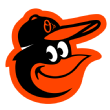 1. Baltimore Orioles: Adley Rutschman, C, Oregon State
1. Baltimore Orioles: Adley Rutschman, C, Oregon State
Who is Rutschman? The clear No. 1 prospect in this draft class and a sure bet to stay at catcher, Rutschman hit .408 for Oregon State this year. According to ESPN’s Keith Law, the switch-hitting backstop has one of the safest floors of the draft, because he will stay behind the plate and the ceiling of a perennial All-Star thanks to his power potential.
Why the Orioles took him here: It’s no secret that the Orioles have holes to fill just about everywhere on the diamond, and plugging the one behind the plate with a potential franchise cornerstone who has drawn comparisons to Buster Posey and Joe Mauer is a pretty good place to start. How good is Rutschman? Well, Cincinnati showed the ultimate sign of respect by electing to walk him with the bases loaded during an NCAA regional matchup last week. — Dan Mullen
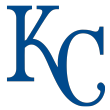 2. Kansas City Royals: Bobby Witt Jr., SS, Colleyville (Texas) Heritage HS
2. Kansas City Royals: Bobby Witt Jr., SS, Colleyville (Texas) Heritage HS
Who is Witt? Arguably the most famous name in this year’s class, Witt’s father was the No. 3 overall pick in the 1985 draft, making the Witts the first father-son combination to both be selected as top-five picks. The Texas prep star is a true shortstop with potentially plus defense, a huge arm, good instincts and a history of hitting.
Why the Royals took him here: According to Keith Law, the Royals zeroed in on Witt months ago, and they have not wavered on making him their guy at No. 2. The upside Kansas City is betting on is a middle-of-the-diamond star, but there is some reason for concern about Witt’s age (he will turn 19 in June) for a high schooler, since he has been older than most of the competition he has faced so far. — Mullen
0:28
The Royals select Bobby Witt Jr. at No. 2 in the MLB Draft, making Witt Jr. and his dad Witt Sr. (No. 3 in 1985) the highest drafting duo in history.
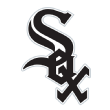 3. Chicago White Sox: Andrew Vaughn, 1B, Cal
3. Chicago White Sox: Andrew Vaughn, 1B, Cal
Who is Vaughn? The 2018 Golden Spikes winner, Vaughn has absolutely raked since he set foot on campus in Berkeley. He followed up his .402 batting average in 2018 by hitting .381 this year, and he smacked 50 home runs in his three seasons at Cal.
Why the White Sox took him here: Keith Law called Vaughn the best pure bat in this draft, and it would have been hard to imagine Chicago passing on adding that kind of hitter with the No. 3 overall pick. As a major conference college star, Vaughn should move quickly through the minors and bring his smooth right-handed swing to the South Side sooner than later. The history of shorter first basemen as high draft picks isn’t great, but Vaughn has a chance to change that here. — Mullen
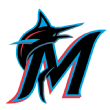 4. Miami Marlins: J.J. Bleday, OF, Vanderbilt
4. Miami Marlins: J.J. Bleday, OF, Vanderbilt
Who is Bleday? A corner outfield prospect who has shown his power in the toughest conference in college baseball, Bleday is a future right fielder with an unusual swing that could present some risk but enough pop in his bat to make it more than worth it here.
Why the Marlins took him here: A polished college bat is a great fit for a franchise in desperate need of offense at the big league level. Miami has gravitated toward athletic players during Derek Jeter’s short tenure, but betting on a bat-first prospect shows a willingness to break from the mold for the right player. — Mullen
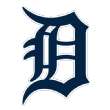 5. Detroit Tigers: Riley Greene, OF, Hagerty HS (Oviedo, Florida)
5. Detroit Tigers: Riley Greene, OF, Hagerty HS (Oviedo, Florida)
Who is Greene? Greene lags behind Witt as an all-around prospect, but he might be the best pure bat of any prep hitter in this class. According to Keith Law, Greene’s future is in left field.
Why the Tigers took him here: Greene’s defense is a work in progress, but Detroit is betting on a high schooler who could hit for both power and average thanks to his hand speed. — Mullen
 6. San Diego Padres: C.J. Abrams, SS, Blessed Trinity HS (Roswell, Georgia)
6. San Diego Padres: C.J. Abrams, SS, Blessed Trinity HS (Roswell, Georgia)
Who is Abrams? One of the fastest runners in this year’s draft, Abrams is a high school shortstop with the athleticism to stay there or end up in center field, where his speed could be put to even better use. Keith Law sees Abrams as a prospect with the potential to hit for average, but not much power.
Why the Padres took him here: With the draft playing out according to form so far, Abrams seemed like the clear choice for San Diego here. One advantage for the Padres is that having a system already stocked with young players in or near the majors allows them to take a chance on a toolsy high school star who might take a little extra time to develop. — Mullen
 7. Cincinnati Reds: Nick Lodolo, LHP, TCU
7. Cincinnati Reds: Nick Lodolo, LHP, TCU
Who is Lodolo? The first pitcher off the board in a class that Keith Law has noted as the weakest in his time covering the draft, Lodolo is a hard-throwing lefty with a slightly lower arm slot than many starters, leading some to wonder if his future will be in the bullpen.
Why the Reds took him here: Lodolo might profile more as a mid-rotation starter than a true ace — if he stays a starting pitcher — but in this draft, he is the best left-handed pitching prospect available, and his slider could become a devastating out pitch as he makes his way through Cincinnati’s system. He’ll get the full slot of $5.43 million, sources told Jeff Passan. — Mullen
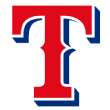 8. Texas Rangers: Josh Jung, 3B, Texas Tech
8. Texas Rangers: Josh Jung, 3B, Texas Tech
Who is Jung? College bats are the clear strength of this draft, and Jung is another player who has been extremely productive during his time as a collegiate player. While his power numbers don’t blow you away, he hit .392 in 2018, and he has followed it up with a .335 average for a Texas Tech team that will host a super regional next weekend.
Why the Rangers took him here: Texas is clearly betting that the hit tool will carry Jung as a prospect. There are some questions about hit power potential, and he will need to work to stay at third base defensively — but there will be a spot for him if he continues to throw out hits like he has as a Red Raider. — Mullen
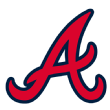 9. Atlanta Braves: Shea Langeliers, C, Baylor
9. Atlanta Braves: Shea Langeliers, C, Baylor
Who is Langeliers? The second-best catching prospect in this draft, Langeliers is another prospect who, like Rutschman, should move quickly and stay behind the plate. The Baylor backstop suffered a broken hamate bone early this season, but he kept his stock up by performing well after returning to the field.
Why the Braves took him here: As the compensation pick for not signing Carter Stewart last year, Atlanta is getting a player who would be the top catching prospect in most drafts. Is Langeliers going to challenge Rutschman as a hitter? No. But a strong defensive catcher with some offensive ability still carries plenty of value. — Mullen
 10. San Francisco Giants: Hunter Bishop, OF, Arizona State
10. San Francisco Giants: Hunter Bishop, OF, Arizona State
Who is Bishop? The younger brother of Mariners outfielder Braden Bishop didn’t hit much his first two years at Arizona State, before exploding out of the gate this season. He has power and speed and plays center field for ASU, but he might end up as a left fielder in the pros.
Have you seen that San Francisco outfield? The Giants had the worst outfield production in the majors in 2018, and they are near the bottom once again in 2019. Bishop had the best tools left on the board, and while he has a lot of swing-and-miss in his game (23 percent strikeout rate), if it all comes together, he has much ceiling as any outfielder in this draft. — David Schoenfield
 11. Toronto Blue Jays: Alek Manoah, RHP, West Virginia
11. Toronto Blue Jays: Alek Manoah, RHP, West Virginia
Who is Manoah? Listed at 6-foot-6 and 260 pounds, Manoah is as big a pitching prospect as the top of the draft has seen in recent memory. A reliever his first two seasons in Morgantown, Manoah’s stock skyrocketed after he moved into the rotation, and he excelled this year.
Why the Blue Jays took him here: Have we mentioned this isn’t a great class for pitching prospects? That said, Manoah provides Toronto with the crop’s best bet to become a solid piece of a big league rotation. Keith Law points to a four-pitch mix highlighted by two swing-and-miss pitches (changeup and slider) that should get Manoah to the majors. — Mullen
 12. New York Mets: Brett Baty, 3B, Lake Travis HS (Austin, Texas)
12. New York Mets: Brett Baty, 3B, Lake Travis HS (Austin, Texas)
Who is Baty? As a power-hitting prep prospect, he will need his bat to carry him to the majors, as his defense at third base is very much a work in progress. He also is one of the oldest high school players in this draft at 19½ — a pretty big red flag.
Why the Mets took him here: Baty has some of the best power in this draft, but he isn’t just a power hitter. If it all comes together, New York just took one of the best all-around hitters in this draft. But there are a few more “ifs” than some of the other prospects drafted around him here. — Mullen
 13. Minnesota Twins: Keoni Cavaco, 3B, Eastlake HS (Chula Vista, California)
13. Minnesota Twins: Keoni Cavaco, 3B, Eastlake HS (Chula Vista, California)
Who is Cavaco? A late-blooming third baseman/shortstop, Cavaco was the biggest pop-up high school player of the spring, moving from a little-known prospect to a first-round talent based on his power potential, athleticism and the ability to play third with the possibility that he can stick at shortstop.
Why the Twins took him here: With the big league team thriving in first place and top-rated prospects like Alex Kirilloff and Royce Lewis on the way, the Twins have a good foundation to remain successful in the short term and the long term. Cavaco is a roll of the dice, of sorts, as the Twins project his breakout performance as a sign that he is just beginning his upward trajectory. — Schoenfield
 14. Philadelphia Phillies: Bryson Stott, SS, UNLV
14. Philadelphia Phillies: Bryson Stott, SS, UNLV
Who is Stott? A shortstop who is likely to actually stay at shortstop, despite his size, the UNLV product is listed at 6-foot-3 and 200 pounds and is most often compared to Giants shortstop Brandon Crawford.
Why the Phillies took him here: Stott will have to prove that his numbers aren’t just the product of his hitter-friendly environment in Las Vegas and the Mountain West Conference, but Philadelphia is getting a potential contributor on both sides of the ball at shortstop with enough size that a move to third base also is a possibility. — Mullen
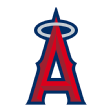 15. Los Angeles Angels: Will Wilson, SS, NC State
15. Los Angeles Angels: Will Wilson, SS, NC State
Who is Wilson? Wilson is a college shortstop who profiles more as a second baseman in pro ball. Last summer for USA Baseball’s Collegiate National Team, Wilson played second, while the man who went off the board one pick before him — Bryson Stott — was the shortstop.
Why the Angels took him here: Wilson has demonstrated power that should play at second base during his time at NC State, belting a combined 31 home runs over the past two seasons. — Mullen
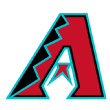 16. Arizona Diamondbacks: Corbin Carroll, OF, Lakeside HS (Seattle)
16. Arizona Diamondbacks: Corbin Carroll, OF, Lakeside HS (Seattle)
Who is Carroll? The No. 4 player on Keith Law’s big board, the 5-foot-10 Carroll is an undersized outfielder with speed, athleticism and plus range in center field, and Law believes he has the strength and swing to get to above-average power as he matures. As Law wrote, if he were 6-foot-3, Carroll might have been a candidate to go first overall.
Why the Diamondbacks took him here: With seven of the first 75 picks, the Diamondbacks have the biggest draft pool of the 30 teams, and they might have received a gift here with their first selection. Given the success of all the undersized players across the majors right now, Carroll’s size isn’t the big negative it might have been viewed as a generation ago. — Schoenfield
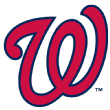 17. Washington Nationals: Jackson Rutledge, RHP, San Jacinto College
17. Washington Nationals: Jackson Rutledge, RHP, San Jacinto College
Who is Rutledge? If you thought Alek Manoah was big, wait until you see the 6-foot-8, 260-pound Rutledge on the mound. Rutledge landed at San Jacinto after transferring from Arkansas and dominated with a fastball that regularly touched 98 mph this spring.
Why the Nationals took him here: With Rutledge’s high 90s fastball, a cutter and an improving breaking ball, it’s not hard to understand why Washington would jump on a chance to draft a pitcher with that upside. But it remains to see what he’ll do against elite competition after taking the junior college route to the draft. — Mullen
 18. Pittsburgh Pirates: Quinn Priester, RHP, Cary-Grove (Illinois) HS
18. Pittsburgh Pirates: Quinn Priester, RHP, Cary-Grove (Illinois) HS
Who is Priester? A 6-foot-3 right-hander from a northern state, Priester is a strike thrower with a repeatable delivery and a swing-and-miss curveball.
Why the Pirates took him here: Just before the draft started, Keith Law said he was hearing Pittsburgh was likely to go with a high school arm here. Given that Will Wilson and Shea Langeliers (two players Law had going to the Pirates in mock drafts) already were off the board, it seems the Bucs’ decision was made easier by those selecting before them. — Mullen
 19. St. Louis Cardinals: Zack Thompson, LHP, Kentucky
19. St. Louis Cardinals: Zack Thompson, LHP, Kentucky
Who is Thompson? The Kentucky product is a southpaw who has proved he can compete against high-level competition in the SEC this season. He struck out 130 batters in 90 innings and posted a 2.40 ERA for the Wildcats, thanks to a strong fastball/curveball combo.
Why the Cardinals took him here: According to Keith Law, Thompson could have been a top-10 pick if not for a 2018 elbow issue and some late elbow pronation in his delivery. The Cardinals have a history of success drafting starting pitchers from major conferences, and Thompson could be next in line. — Mullen
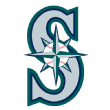 20. Seattle Mariners: George Kirby, RHP, Elon
20. Seattle Mariners: George Kirby, RHP, Elon
Who is Kirby? A 6-foot-3 right-hander who is not from a power conference, Kirby gets his fastball up to 95 mph, and his curveball and changeup both rate as above-average. Kirby walked just six batters in 88⅓ innings, but his fastball was fairly hittable for his level of competition (73 hits), so it’s hard to know if he can develop from a control guy (throws strikes) to a command guy (hits location).
Why the Mariners took him here: Well, for the third time in four years, general manager Jerry Dipoto took a smaller-college guy in the first round, following outfielder Kyle Lewis (Mercer) in 2016 and pitcher Logan Gilbert (Stetson) last season. Like Gilbert, Kirby is viewed as a high-floor guy more so than having a high ceiling, and given the state of the Mariners’ pitching staff, betting on a higher degree of certainty is understandable. — Schoenfield
 21. Atlanta Braves: Braden Shewmake, SS/3B, Texas A&M
21. Atlanta Braves: Braden Shewmake, SS/3B, Texas A&M
Who is Shewmake? A contact hitter in the power-strikeout era, Shewmake hit over .300 in all three of his years at Texas A&M and struck out just 27 times in 241 at-bats this season. At 6-foot-4, he is a tall shortstop who could end up at second or third or moving around the diamond.
Why the Braves took him here: Have we mentioned that college hitters are the strength of this draft? Shewmake proved himself in the tough SEC, and he is a safe bet to produce with his hit tool. There isn’t a lot of power here, but Atlanta added a second high-floor player after landing Shea Langeliers at No. 9. — Mullen
 22. Tampa Bay Rays: Greg Jones, SS, UNC Wilmington
22. Tampa Bay Rays: Greg Jones, SS, UNC Wilmington
Who is Jones? A draft-eligible sophomore, the switch-hitter is an 80 runner, and then some, making him the fastest player in the draft. That makes him one of the most exciting players in the draft. And while he has a strong arm, Keith Law thinks he will move to center field and has concerns about Jones’ hit tool (he did hit .343 for UNC Wilmington, playing in a minor conference), thus ranking him just No. 62 on his board.
Why the Rays took him here: Speed never slumps! The Rays have one of the top two farm systems, allowing them to gamble here on a player with game-changing speed. The one thing Tampa Bay’s farm system does lack is an obvious center-field replacement for Kevin Kiermaier — who has been injury-prone in recent seasons — so if Jones moves to center, he has the speed to give the Rays another great glove in the outfield. — Schoenfield
 23. Colorado Rockies: Michael Toglia, 1B/OF, UCLA
23. Colorado Rockies: Michael Toglia, 1B/OF, UCLA
Who is Toglia? The UCLA first baseman/corner outfielder is a plus defender at first with a chance to develop as a hitter. He is the No. 51 player on Keith Law’s Big Board, so this pick was something of a surprise.
Why the Rockies took him here: Law mentioned going into the draft that Colorado was one of the toughest teams to get a read on, so it’s likely the Rockies saw something in Toglia that others didn’t. While the glove is the calling card for Toglia, he has posted a 1.001 OPS and belted 14 home runs for the No. 1 team in college baseball so far this season — and first base has consistently been a position of need in Colorado since the days of Todd Helton. — Mullen
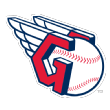 24. Cleveland Indians: Daniel Espino, RHP, Georgia Premier Academy
24. Cleveland Indians: Daniel Espino, RHP, Georgia Premier Academy
Who is Espino? A prospect Keith Law calls a smaller 6-foot right-hander with effort, Espino has first-round stuff despite his stature. He is a Panamanian-born pitcher who managed to overcome the stigma smaller starting pitchers face in the first round of the draft.
Why the Indians took him: Cleveland is one team that isn’t afraid to keep a smaller pitcher in the rotation (think Trevor Bauer), and the Indians are getting a pitcher with as much pure stuff as anyone who has been picked. Espino has flashed 99 mph on his fastball and shown a hard slider to go with it, meaning the payoff for Cleveland could be high if this pick works out. — Mullen
 25. Los Angeles Dodgers: Kody Hoese, 3B, Tulane
25. Los Angeles Dodgers: Kody Hoese, 3B, Tulane
Who is Hoese? The Royals took Hoese in the 35th round last year as a draft-eligible sophomore, but he returned to Tulane and improved from .291 hitting with five home runs to .392 and 23 home runs, while registering more walks than strikeouts. He will turn 22 in July, making him the oldest hitter in Keith Law’s top 100, and Hoese eventually could end up at first base.
Why the Dodgers took him here: Did you see those offensive numbers? Back in 2015, the Dodgers struck gold with the 24th pick when Walker Buehler fell because of some arm issues. Hoese fell in part because of his age, and you wonder if the Dodgers will once again take advantage with a stealth late-first-round pick. — Schoenfield
 26. Arizona Diamondbacks: Blake Walston, LHP, New Hanover (North Carolina) HS
26. Arizona Diamondbacks: Blake Walston, LHP, New Hanover (North Carolina) HS
Who is Walston? Keith Law points to Walston as one of the few pop-up arms of the spring in this draft, but the projectable North Carolina prep prospect is considered a tough sign as an NC State commit. He also was a record-setting quarterback in high school.
Why the Diamondbacks took him here: The Diamondbacks have seven Day 1 picks, so this somewhat surprising selection could have some strategy around it. Arizona took a high school outfielder earlier in the night when it grabbed Corbin Carroll, and it added an athletic pitcher with upside — if Walston does in fact sign with Arizona here. — Mullen
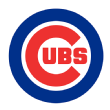 27. Chicago Cubs: Ryan Jensen, RHP, Fresno State
27. Chicago Cubs: Ryan Jensen, RHP, Fresno State
Who is Jensen? The No. 32 player on Keith Law’s draft board, Jensen has a big-time fastball that sits at 97 to 99 mph but lacks a strong second pitch.
Why the Cubs took him here: Drafting and developing pitchers hasn’t exactly been a strength for the Cubs during the Theo Epstein era. In Jensen, Chicago is betting on the heat of an undersized right-hander who has started in college but could end up in a major league bullpen. — Mullen
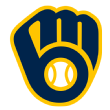 28. Milwaukee Brewers: Ethan Small, LHP, Mississippi State
28. Milwaukee Brewers: Ethan Small, LHP, Mississippi State
Who is Small? A redshirt junior who missed the 2017 season with Tommy John surgery, Small doesn’t have big-time velocity at 86 to 92 mph, but he dominated the SEC with a 1.88 ERA and 160 strikeouts in 96 innings. Batters hit just .160 against him as his fastball showed deception and the movement you need from a finesse-type lefty.
Why the Brewers took him here: Teams don’t really use the draft for need, since you don’t know what your needs will be in the future. But the Brewers certainly need rotation help — not just at the major league level, but also in the minors, as the farm system has produced Brandon Woodruff, Corbin Burnes and Freddy Peralta over the past two seasons. Small had big numbers in the best conference in college baseball.
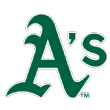 29. Oakland Athletics: Logan Davidson, SS, Clemson
29. Oakland Athletics: Logan Davidson, SS, Clemson
Who is Davidson? Davidson is a shortstop with some pop — but also some swing-and-miss — in his bat. He posted double-digit home runs and steals in all three of his seasons at Clemson, and he has a good chance to stick in the middle of the diamond as a pro.
Why the Athletics took him here: The A’s are betting Davidson can develop into the player his tools suggest, despite his struggles in the wood-bat Cape Cod League — where he hit just .194 last season — and his high strikeout totals during his time at Clemson. — Mullen
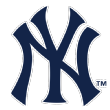 30. New York Yankees: Anthony Volpe, SS, Delbarton HS (Morristown, New Jersey)
30. New York Yankees: Anthony Volpe, SS, Delbarton HS (Morristown, New Jersey)
Who is Volpe? A high school teammate of the more heralded Jack Leiter (a potential first-rounder himself, but likely headed to Vanderbilt), Volpe ranks just 90th on Keith Law’s board. His hit tool projects as his most likely tool to be above-average, and Law likes his feel and instincts but believes Volpe will move to second or third in the pros.
Why the Yankees took him here: Maybe they’ll take Leiter — son of Al — later on and try to buy him out of that Vanderbilt commitment, using Volpe as a recruiting tool. Or maybe the Yankees just really like that hit tool. — Schoenfield
 31. Los Angeles Dodgers: Michael Busch, 1B, North Carolina
31. Los Angeles Dodgers: Michael Busch, 1B, North Carolina
Who is Busch? Keith Law had Busch at No. 16 on his draft board, but he fell to the Dodgers 15 picks later. He has played first base during his time at North Carolina, but he was announced as a second baseman when L.A. took him.
Why the Dodgers took him here: Busch has power — 16 home runs this spring — and has walked 20 more times than he has struck out this season. Six picks after grabbing Kody Hoese from Tulane, the Dodgers added another strong bat late in the first round for an organization that has nailed its offensive picks in recent drafts — Mullen
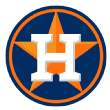 32. Houston Astros: Korey Lee, C, Cal
32. Houston Astros: Korey Lee, C, Cal
Who is Lee? Surprise! When Andrew Vaughn became the first player from Cal selected in Monday’s first round, everyone saw it coming. When Lee’s name came off the board 29 picks later, none of us saw it coming. Lee is the first player ranked outside of Keith Law’s top 100 to be selected.
Why the Astros took him here: Lee’s slash line is certainly attention-grabbing, as he went off to the tune of .338/.419/.626 for the Golden Bears this season; and as a general rule, if the Astros see something in a player, there’s probably something there. — Mullen
Compensation Picks
No. 33: Arizona Diamondbacks:* Brennan Malone, RHP, IMG Academy
No. 34: Arizona Diamondbacks:** Drey Jameson, RHP, Ball State
*For losing Patrick Corbin
**For losing A.J. Pollock
Competitive Balance Round A
No. 35 Miami Marlins: Kameron Misner, OF, Missouri
No. 36 Tampa Bay Rays:* J.J. Goss, RHP, Cypress Ranch HS (Houston)
No. 37 Pittsburgh Pirates: Sammy Siani, OF, Penn Charter School (Philadelphia)
No. 38 New York Yankees:** T.J. Sikkema, LHP, Missouri
No. 39 Minnesota Twins: Matt Wallner, OF, Southern Miss
No. 40 Tampa Bay Rays:*** Seth Johnson, RHP, Campbell
No. 41 Texas Rangers:**** Davis Wendzel, 3B, Baylor
* For not signing Gunnar Hoglund
** From Reds via trade
*** From A’s via trade
**** From Brewers via trade
Second Round
No. 42 Baltimore Orioles: Gunnar Henderson, SS, Morgan Academy (Selma, Alabama)
No. 43 Boston Red Sox:* Cameron Cannon, SS, Arizona
No. 44 Kansas City Royals: Brady McConnell, SS, Florida
No. 45 Chicago White Sox: Matthew Thompson, RHP, Cypress Ranch HS (Houston)
No. 46 Miami Marlins: Nasim Nunez, SS, Collins Hill HS (Suwanee, Georgia)
No. 47 Detroit Tigers: Nick Quintana, 3B, Arizona
No. 48 San Diego Padres: Joshua Mears, OF, Federal Way (Washington) HS
No. 49 Cincinnati Reds: Rece Hinds, SS, IMG Academy
No. 50 Texas Rangers: Ryan Garcia, RHP, UCLA
No. 51 San Francisco Giants: Logan Wyatt, 1B, Louisville
No. 52 Toronto Blue Jays: Kendall Williams, RHP, IMG Academy
No. 53 New York Mets: Josh Wolf, RHP, St. Thomas HS (Bellaire, Texas)
No. 54 Minnesota Twins: Matt Canterino, RHP, Rice
No. 55 Los Angeles Angels: Kyren Paris, SS, Freedom HS (Oakley, California)
No. 56 Arizona Diamondbacks: Ryne Nelson, RHP, Oregon
No. 57 Pittsburgh Pirates: Matt Gorski, OF, Indiana
No. 58 St. Louis Cardinals: Trejyn Fletcher, OF, Deering HS (Portland, Maine)
No. 59 Seattle Mariners: Brandon Williamson, LHP, TCU
No. 60 Atlanta Braves: Beau Philip, SS, Oregon State
No. 61 Tampa Bay Rays: John Doxakis, LHP, Texas A&M
No. 62 Colorado Rockies: Aaron Schunk, 3B, Georgia
No. 63 Cleveland Indians: Yordys Valdes, SS, McArthur HS (Hollywood, Florida)
No. 64 Chicago Cubs: Chase Strumpf, 2B, UCLA
No. 65 Milwaukee Brewers: Antoine Kelly, LHP, Wabash Valley College
No. 66 Oakland Athletics: Tyler Baum, RHP, North Carolina
No. 67 New York Yankees: Josh Smith, 2B, LSU
No. 68 Houston Astros: Grae Kessinger, SS, Ole Miss
No. 69 Boston Red Sox: Matthew Lugo, SS, Carlos Beltran Academy
* Boston’s top pick was dropped 10 spots (33 to 43) because the team was more than $40 million over the luxury tax.
Competitive Balance Round B
No. 70 Kansas City Royals: Alec Marsh, RHP, Arizona State
No. 71 Baltimore Orioles: Kyle Stowers, OF, Stanford
No. 72 Pittsburgh Pirates: Jared Triolo, 3B, Houston
No. 73 San Diego Padres: Logan Driscoll, C, George Mason
No. 74 Arizona Diamondbacks: Tommy Henry, LHP, Michigan
No. 75 Arizona Diamondbacks:* Dominic Fletcher, OF, Arkansas
No. 76 Seattle Mariners:** Isaiah Campbell, RHP, Arkansas
No. 77 Colorado Rockies: Karl Kauffmann, RHP, Michigan
* From Cardinals via trade
** From Indians via trade
Compensation Picks
No. 78 Los Angeles Dodgers:* Jimmy Lewis, RHP, Lake Travis (Texas) HS
* For losing Yasmani Grandal
Third Round
No. 79 Baltimore Orioles: Zach Watson, OF, LSU
No. 80. Kansas City Royals: Grant Gambrell, LHP, Oregon State
No. 81. Chicago White Sox: Andrew Dalquist, RHP, Redondo Union HS (Calif.)
No. 82 Miami Marlins: Peyton Burdick, OF, Wright State
No. 83 Detroit Tigers: Andre Lipcius, 3B, Tennessee
No. 84 San Diego Padres: Hudson Head, OF, Winston Churchill HS (Texas)
No. 85 Cincinnati Reds: Tyler Callihan, SS, Providence (Jacksonville, Fla.) HS
No. 86 Texas Rangers: Justin Slaten, RHP, New Mexico
No. 87 San Francisco Giants: Grant McCray, OF, Lakewood Ranch (Fla) HS
No. 88 Toronto Blue Jays: Dasan Brown, OF, Abbey Park (Ontraio) HS
No. 89 New York Mets: Matt Allen, RHP, Seminole (Fla.) HS
No. 90 Minnesota Twins: Spencer Steer, 3B, Oregon
No. 91 Philadelphia Phillies: Jamari Baylor, SS, Benedictine (Va.) School
No. 92 Los Angeles Angels: Jack Kochanowicz, LHP, Harriton (Pa.) HS
No. 93 Arizona Diamondbacks: Tristin English, RHP, Georgia Tech
No. 94 Washington Nationals: Drew Mendoza, 3B, Florida St.
No. 95 Pittsburgh Pirates: Matt Frazier, OF, Arizona
No. 96 St. Louis Cardinals: Tony Locey, RHP, Georgia
No. 97 Seattle Mariners: Levi Stoudt, RHP, Lehigh
No. 98 Atlanta Braves: Michael Harris, LHP, Stockbridge (Ga.) HS
No. 99 Tampa Bay Rays: Shane Sasaki, OF, Iolani (Hawaii) HS
No. 100 Colorado Rockies: Jacob Wallace, RHP, UConn
No. 101 Cleveland Indians: Joseph Naranjo, 1B, Rueben S. Ayala (Calif.) HS
No. 102 Los Angeles Dodgers: Ryan Pepiot, RHP, Butler
No. 103 Chicago Cubs: Michael McAvene, RHP, Louisville
No. 104 Oakland Athletics: Marcus Smith, OF, Pembroke Hill (Mo.) HS
No. 105 New York Yankees: Jake Sanford, OF, Western Kentucky
No. 106 Houston Astros: Jordan Brewer, OF, Michigan
No. 107 Boston Red Sox: Ryan Zeferjahn, RHP, Kansas
* Milwaukee has no third-round pick for signing Yasmani Grandal
Other notable Day 2 picks:
Round 4, No. 122: Arizona Diamondbacks: Glenallen Hill Jr., OF, Santa Cruz (California) HS
For all picks in Rounds 4-40, go to MLB.com’s Draft Tracker.
